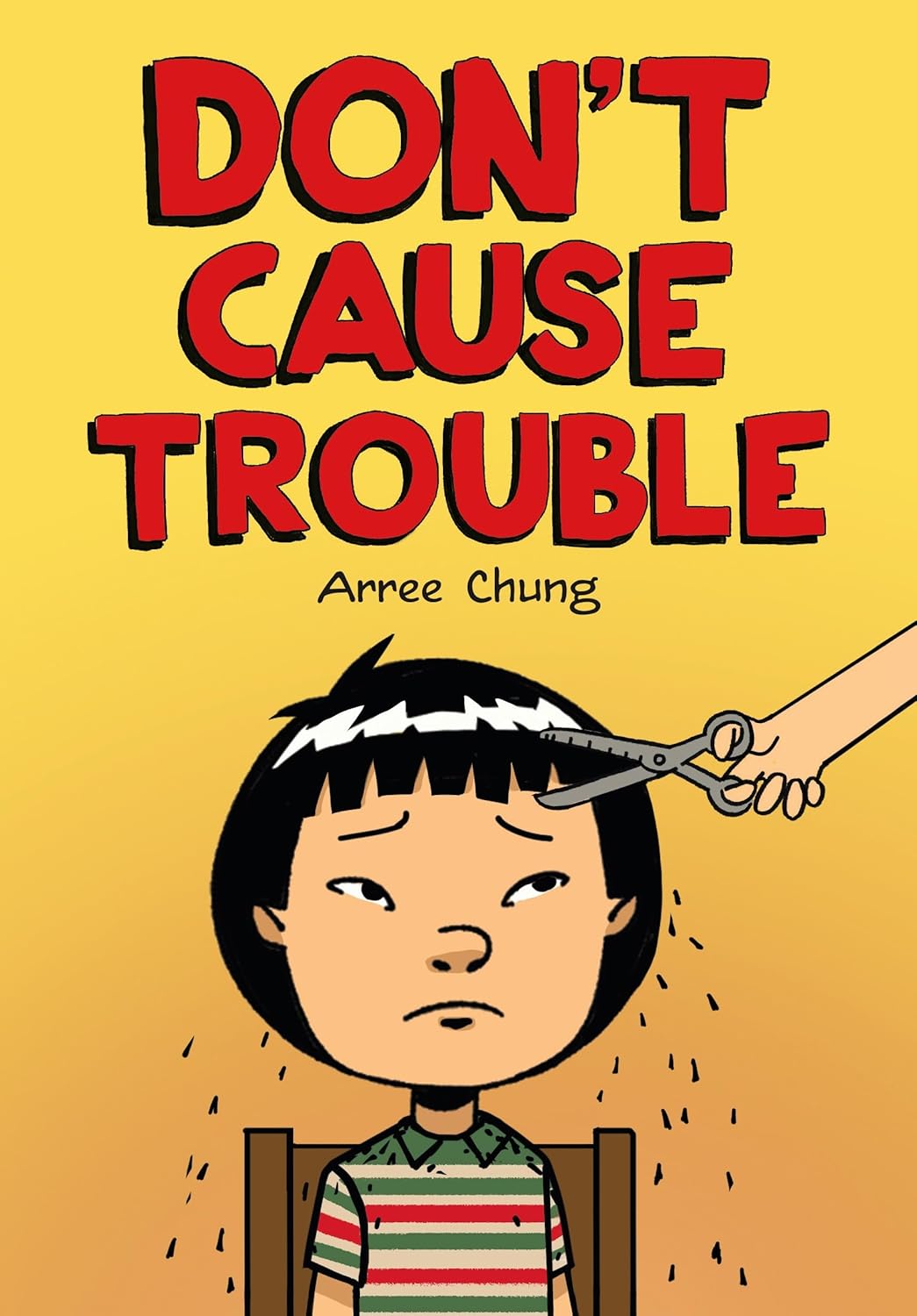Don’t Trigger Bother | Overview
 Don’t Trigger Bother
Don’t Trigger Bother
Author/artist: Arree Chung
Henry Holt and Firm; $14.99
Writer’s ranking: Ages 8-12
Cartoonist Arree Chung’s Don’t Trigger Bother stars 12-year-old Ming Lee, the one son of Chinese language immigrants. He at all times feels misplaced—not fairly American when he’s at college, however not fairly Chinese language when he’s at dwelling—to the extent that he seems like an alien. A lot in order that he fills his sketchbook with pictures of himself as an area alien.
It’s not simply the truth that he’s Chinese language American that makes him really feel this fashion, although. He notes briefly close to the start that he’s normally the one Asian child in his class, there’s a three-panel flashback to a time when he endured racist bullying and, later within the e-book, a second the place he confesses to an Indian-American buddy that he generally needs he was white or Black as a substitute of Chinese language American, however these are the one situations wherein race appears to play a significant factor in Ming’s emotions of otherness.
SCROLL TO KEEP READING THIS POST
An even bigger element appears to be that his mother and father are extraordinarily thrifty, to the extent that his mother cuts his hair at dwelling (and at all times in an unflattering bowl reduce), shopping for “new” garments means procuring at thrift shops (and in search of the crimson dot sticker there that signifies a sale merchandise there) and their concept of splurging is a visit to a quick meals restaurant (the place they load up on free napkins and ketchup packets).
Moreover, Ming loves basketball, however is small and timid, and normally resorts to watching the opposite boys play it. And, clearly, he likes ladies, however they don’t appear to love him again but; as a substitute, all of them appear fascinated by good-looking white child Zack.
Chung’s e-book is dedicated to laying out Ming’s life and issues, utilizing the primary day of center faculty as a springboard, after which to chronicling Ming’s varied makes an attempt to attain the type of faculty life he desires. A few of that are merely misguided (saving cash for the recent new tennis sneakers the Air Elevates, as if the fitting garments will out of the blue make him common, for instance), whereas one among them is outright disastrous and finally ends up with Ming and his two new greatest associates at a police station.
Finally, issues begin to get higher when he embraces a component of his heritage (marrying it to an entrepreneurial spirit) and when he realizes that a number of the extra common youngsters whose lives he envies are youngsters similar to him and have fairly comparable issues.
Ming’s discomfort, insecurity and sense of embarrassment can be acquainted to anybody his age, no matter whether or not they’re the youngsters of immigrants or an ethnic minority of their group like he’s. The oft-frustrated quest to be common and funky is, after all, common amongst middle-schoolers.
Whereas Chung’s e-book offers with pretty severe topics, it’s additionally fairly humorous. A lot of the humor comes from the presence of Ming’s mother and father, each of whom are what one would possibly consult with as “actual characters.” Fully reverse in nearly each means—his dad is tall and quiet and at all times skips church, his mother is a tiny chatterbox and religious Christian—they make for one thing of a basic comedy duo, and their many quirks provide comedian reduction to Ming’s social struggles.
SCROLL TO KEEP READING THIS POST
The title of the e-book comes from one thing Ming’s dad at all times tells him; it’s one among a handful of English phrases he makes use of time and again, together with declaring that one thing that’s good is “#1”.
Chung’s artwork is slightly simplified and on the cartoonier aspect, his important characters—Ming and his associates, Ming’s mother—being tiny in stature and having huge heads. That paired with the college setting put me in thoughts of Lincoln Peirce’s common Massive Nate whereas studying, though it’s clearly fairly completely different from that humorous sketch.
Due to Chung’s type and the hand-drawn borders of the panels, which have an natural, barely wiggly look to them, the entire comedian seems to be not in contrast to the type of factor that the budding artist Ming would possibly draw in some unspecified time in the future. Which is definitely applicable, on condition that whereas Don’t Trigger Bother is fictional, it’s impressed by Chung’s personal childhood, and Ming is clearly a model of Chung at that age.
He admits to that in a observe from the writer that follows the story. That observe is then adopted by a five-page illustrated prose sequence wherein Chung breaks down the varied steps of constructing a graphic novel (in his case, story, script, storyboards, design, inking, and many others.). That ought to show of nice curiosity to readers who need to make their very own comics sometime, simply as Ming’s story ought to show of comparable curiosity to them right this moment.
Filed beneath: Critiques


0 Comment